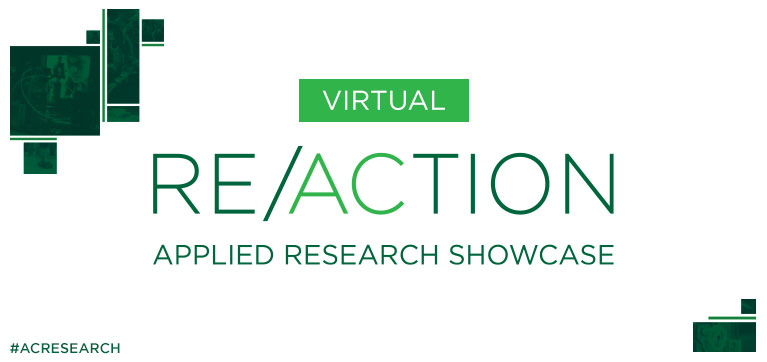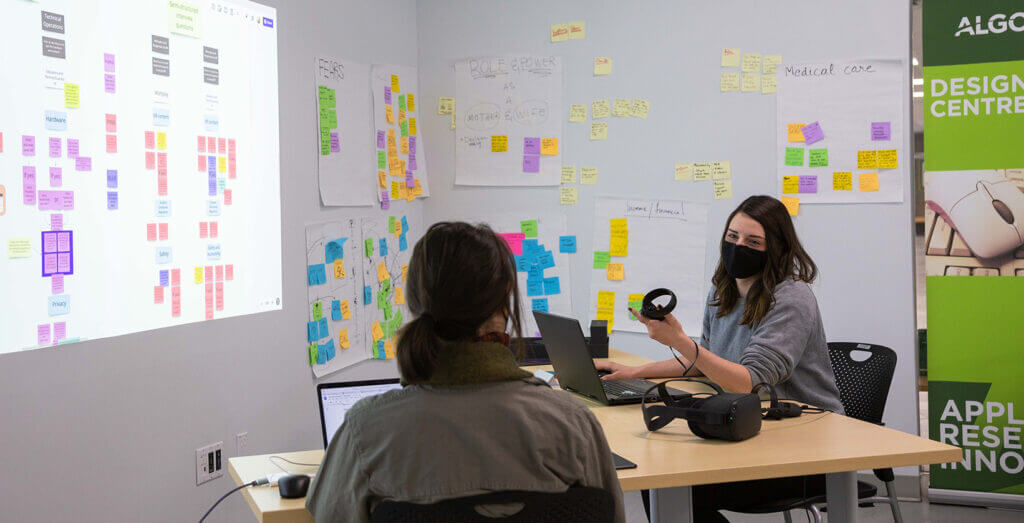Walking with wild elephants and swimming among dolphins: this AC project knows no bounds
Posted on Wednesday, April 6th, 2022

Imagine a world where walking with elephants helped children manage their anxiety.
Using the power of virtual reality (VR), a team of three Algonquin College students are bringing dolphins to doorsteps, pyramids to backyards and elephants to classrooms to support children in need of a calming, secure and emotionally-safe environment.
Through the project New Realities: A Guide for Virtual Reality in Classrooms and at Home, learners from the Human-Centred Design Lab – Sara Hubberstey, Jean Pierre Lachance and Maria Tchernikova – are helping their client, Wishplay, bring VR to children at home and in the classroom.
Along with supervising professor Jed Looker, the team is developing a VR user guide that explores how to set-up and administer VR for children aged 6-12. The students determined user guide best practices through literature reviews, speaking with subject-matter experts, as well as interviews with educators and guardians.
Originally for students with special needs, educators expressed immediate interest in opening the VR program up for all students. According to Hubberstey, this led the team to ensure accessibility and inclusion remained a priority from the beginning of their research through the development of their design.
Lachance echoes this, “If you want to design something for a particular demographic or user group, it should be something that everyone can use.”
Before the team began their project, there had been little available research on VR for children, making their user guide – which will be presented at this Friday’s virtual RE/ACTION Showcase – one of the first of its kind. Being an early adopter has its challenges, but the team hopes their work will help make a case for expanding VR use in the classroom.
“Many of the educators and parents we interviewed had this negative perception of VR and negative connotations of screen time,” said Tchernikova. “After seeing how the power of VR affected children in a positive way, their perception changed to be significantly more positive.”
Safety is central to the team’s research. Included in the user guide for parents and educations are considerations such as communicating with and always supervising the child during VR sessions, limiting time use and instructions on introducing the headset.
Students react differently to the VR experience. From calming hyperactivity, becoming more comfortable in the classroom setting and gaining confidence among peers, VR has shown to benefit children by helping them adopt mindfulness in various situations.
“There are so many uses for VR, especially for kids, that parents could use if they had this guide, such as if a child is frightened of getting a vaccine or going into an MRI machine,” Hubberstey adds. “Having a safe space to experience new situations helps them feel more secure when they enter those same situations in the real world.”
Looking ahead to the RE/ACTION Showcase, the team’s sights are set on the potential for VR to help children both at home and in the classroom.
“Being able to provide an experience for someone where they feel like they’re surrounded by elephants is really fun. The end goal is to bring joy,” said Hubberstey.
- Posted in
- RE/ACTION Showcase Research
- Tags:
- Applied Research, ARIE, Human-Centred Design Lab, Students, Virtual Reality
